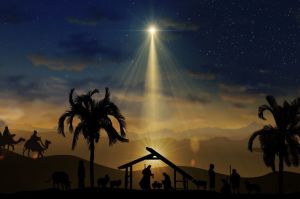Giant Asteroid Heading Close to Earth Will Be Closer Than the Moon
An asteroid the size of an aircraft carrier will pass Earth as close as 201,700 miles Tuesday in an exciting astronomical occurrence. The next known approach of an asteroid this size will be in 2028.
It is the first time in 35 years that an object of this size will pass this close to earth, scientists at NASA declared. The last time a space rock this large came so close to Earth was in 1976, although astronomers did not realize it at the time.
The closest approach will occur at 6:28 p.m. ET when the asteroid 2005 YU55 passes within 202,000 miles of our planet. That is about 0.85 times the distance between the Earth and the moon.
But NASA says there is nothing to worry about.
"The asteroid will safely [sic] fly past our planet slightly closer than the moon's orbit on Nov. 8," the space agency stated on its website. "The gravitational influence of the asteroid will have no detectable effect on Earth, including tides and tectonic plates."
The scientists began tracking the asteroid at the Goldstone Deep Space Communications Complex in California on Nov. 4, using a 230-foot-wide antenna. Additional tracking took place each day from Nov. 6 to Nov. 10, NASA said in a statement.
Radar observations also began today at the Arecibo Planetary Radar Facility in Puerto Rico.
Although the asteroid is in an orbit that regularly brings it to the vicinity of Earth, Venus and Mars, this time it approaches the Earth the closest it has in at least the last 200 years, scientists said.
NASA detects, tracks and characterizes asteroids and comets passing close to Earth using both ground- and space-based telescopes, the agency explains on the website.
The Near-Earth Object Observations Program at NASA's Jet Propulsion Laboratory in Pasadena, Calif., commonly called "Spaceguard," discovers these objects, characterizes some of them and plots their orbits to determine if any could be potentially hazardous to the planet. JPL manages the Near-Earth Object Program Office for NASA's Science Mission Directorate in Washington, NASA said.
One should be able to spot the asteroid with a telescope if it has an aperture of at least 6 to 8 inches, according to Fox News.





























